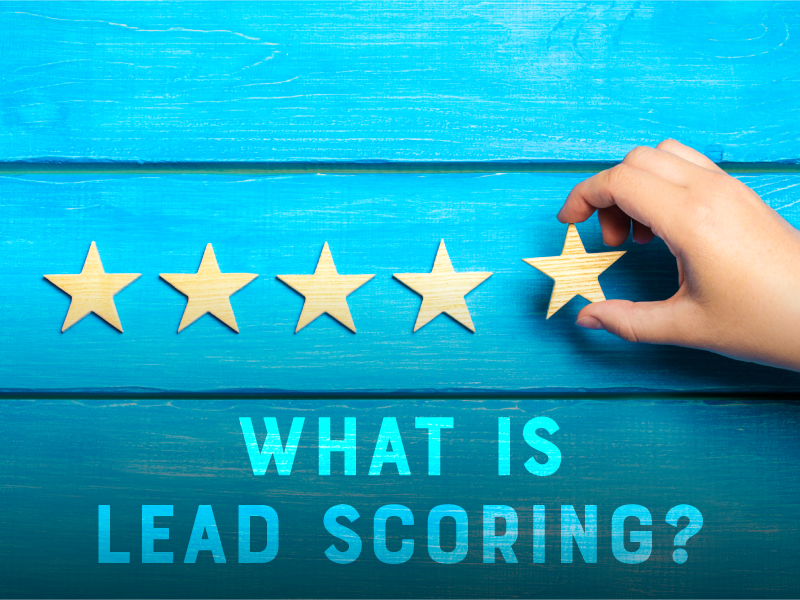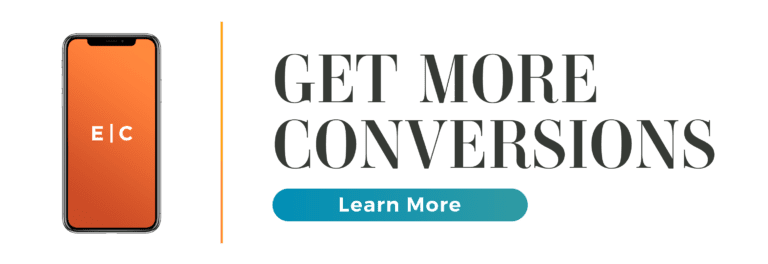Lead scoring is one of those marketing terms you hear about that sound interesting and important, but not everyone can clearly define what it is, how to do it, or what it does. In today’s post, we’re going to dive right into lead scoring as a concept and why it’s critical for your sales and marketing teams’ success.
What is Lead Scoring?
One of the biggest issues that businesses often face is the lack of communication between their marketing and sales teams (not ours, of course, we’re BFFs at Envision). Your marketing team is supposed to attract leads, while your sales team is supposed to close those leads. Remember our whole Inbound vs. Outbound debate? The problem for Sales is often sifting through a pile of leads that may or may not be qualified and then wasting time on tire-kickers or poor fits for the business. That’s where lead scoring comes in.
Lead scoring is an automated process that assigns scores to your leads based on various factors. And please note, that when I say it’s an automated process–I mean that once it’s set up it becomes automated, but none of your tools will come with lead scoring all ready for you (remember: marketing automation is a tool, not a strategy). A point system is set up that awards a certain value to actions taken by your leads on the site. A visit may be one point, while a download of a specific asset may be 10 points and a social share is 5 points. The idea is monitoring a lead and handing it over to Sales only after it’s reached a higher level of qualification.
This is important because it free Sales up to do their outbound jazz and it lets Marketing do what we do best: create content and images and paths for leads to nurture them and help educate them about your business.
Lead Scoring Attributes
Depending on your automation tools, you may have some buckets and not others for some of the parameters, attributes, and actions for which you can assign points for your leads. One thing is common no matter what: in order for lead scoring to work, a lead must opt-in to your tracking! Remember GDPR is a real thing and Google just got fined a LOT of money (like…a shocking amount of money) for breaking those rules. Just because you’re an American company doesn’t mean GDPR doesn’t affect you. Get those opt-ins or face the consequences.
Ok, less ominous portents and more lead scoring! Here are some of the things you can assess with your lead scoring strategy:
- Demographic information. This is information typically provided via opt-in forms or surveys and can include geographic locations, age, education, and household income. The information you get form your leads will depend on your industry.
- Time spent on your website. Leads who spend a lot more time exploring your website are generally going to be more interested than those who only briefly visited. Leads who return for multiple sessions are even more valuable.
- Actions taken. Certain behaviors can indicate the quality of a lead, such as the links they clicked on and the types of pages they viewed. For example, if they viewed your blog and then your product page, it can be assumed that they have some interest in making a purchase. Downloads of gated content, as well as frequent visits to testimonials and case studies, should also be big point-getters!
- Engagement. Opting into an email list or engaging socially (liking, commenting, or sharing content) can all indicate interest.
Something to think about that often gets overlooked: lead scoring can also award negative points. If you know there are attributes, behaviors, or actions that a “bad” lead will take you can add those to a negative list in your lead scoring making those “bad” leads have to work a little harder to get your attention.
For example: let’s say that 90% of your @aol.com form fill emails are bogus leads or bad fits for your services–you can set it up so emails from @aol.com have points taken away from their score so they’d need to take more actions and do more things to increase their quality score. This can help you qualify leads just as well as your positive points can! Make sure to do both for an accurate and robust lead scoring system.
Why Do You Need Lead Scoring?
Oh, you summer child! What a question. Without lead scoring, your sales team won’t be able to tell one lead from another in terms of how ready they are to engage and how far down the sales funnel they are. Your sales personnel will end up engaging with leads who may not be ready to convert yet, which means that your sales personnel is wasting their time. While they are spending time on low-quality leads, high-quality leads that were ready to engage may end up falling through the cracks. Because nobody has engaged with them, you may end up losing them to a competitor.
As a direct result, lead scoring will help to increase your sales productivity, improve your conversion rate, and shorten your sales cycle. In the end, lead scoring helps to improve the alignment between your marketing and sales teams and isn’t that always a good thing?
How to Implement Lead Scoring
Many CRM (customer relationship management) solutions on the market these days offer lead scoring capabilities. For example, HubSpot and SharpSpring both have a lead scoring feature that allows both manual lead scoring and predictive lead scoring.
With manual lead scoring, you can assign positive and negative attributes to your contacts. For example, if they download anything on your site, this can be assigned a positive attribute. If they are located in a region of the country you don’t cater to, this can be assigned a negative attribute.
Predictive lead scoring is a little bit different. With predictive lead scoring, a CRM will automatically analyze contacts to determine the probability that they will close as customers within a 90 day period using a variety of factors, including demographic information provided by the contacts and their history of interactions with your site, emails, or social channels.
Again, lead scoring is not an automated process from the very beginning. In order for it to work, you have to invest some time up front making sure a system is in place to help your automation tools understand what separates a good lead from a bad lead.
-FINAL(01-00)-White&Blue-01.svg)





